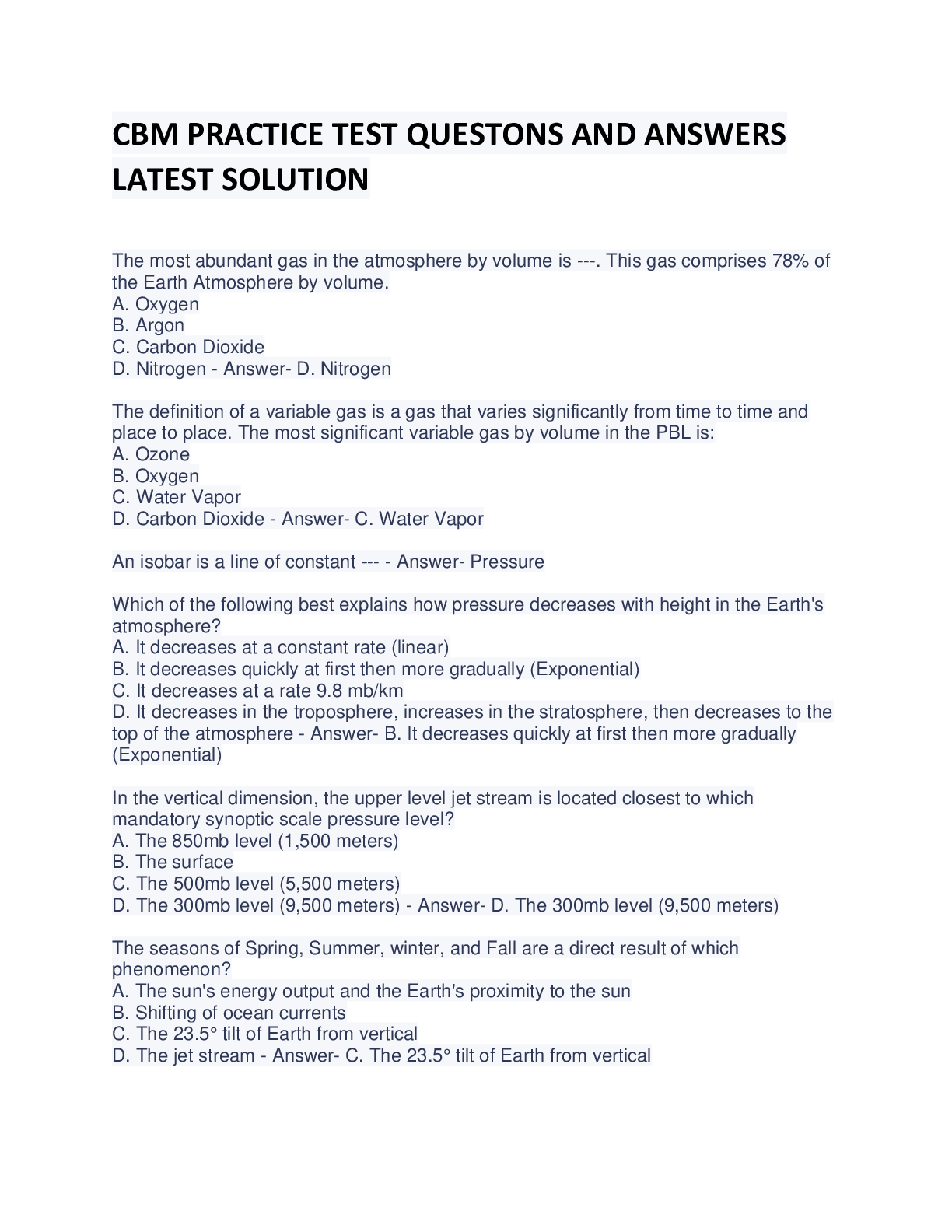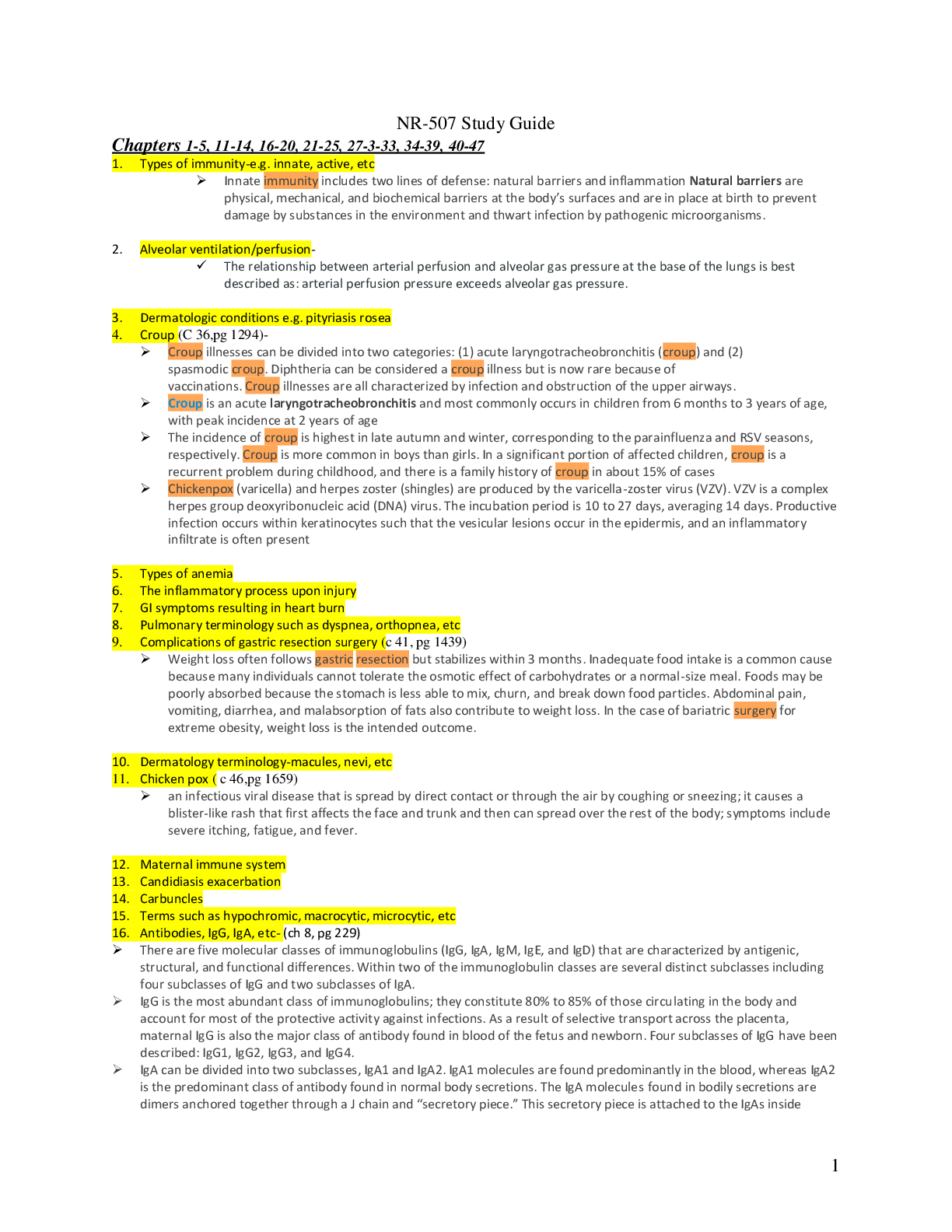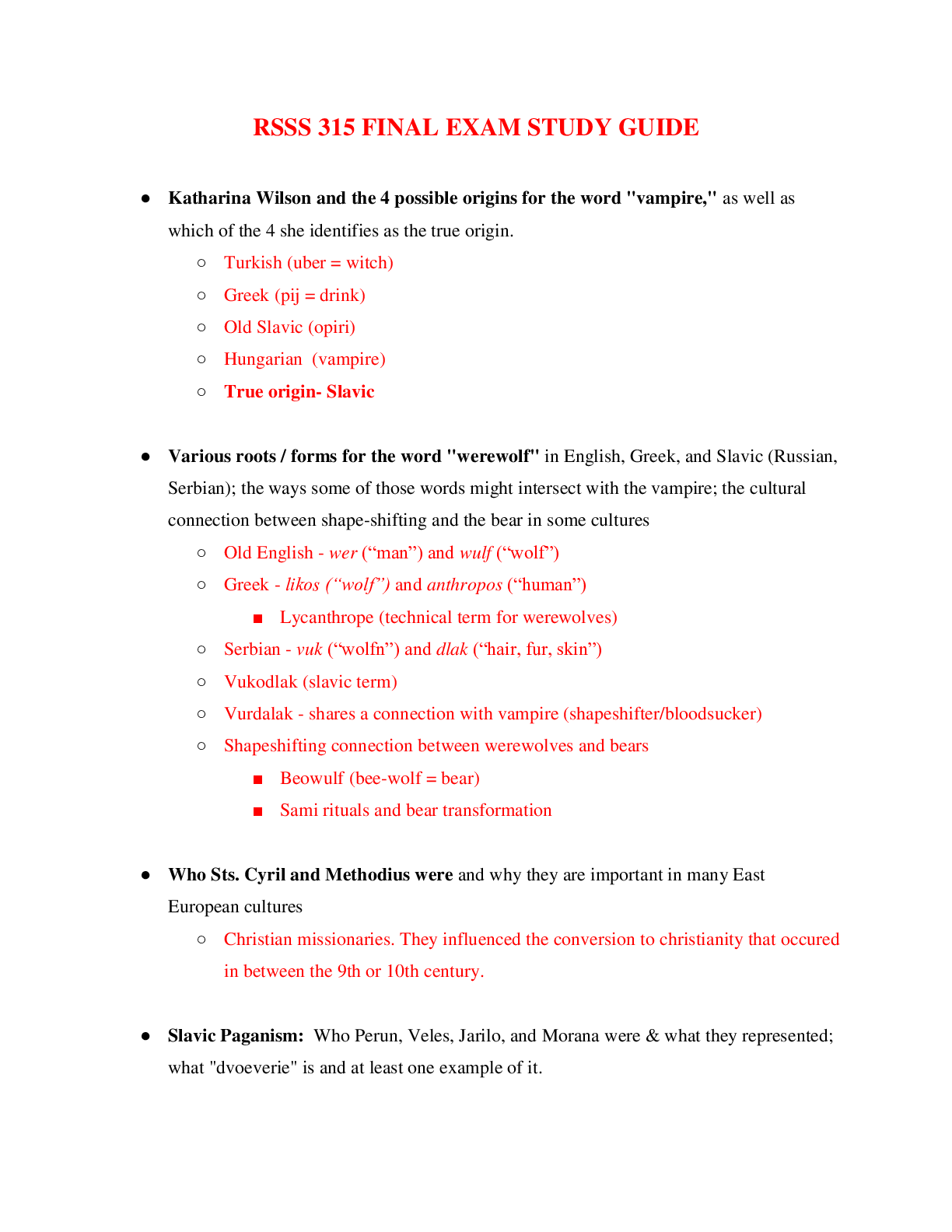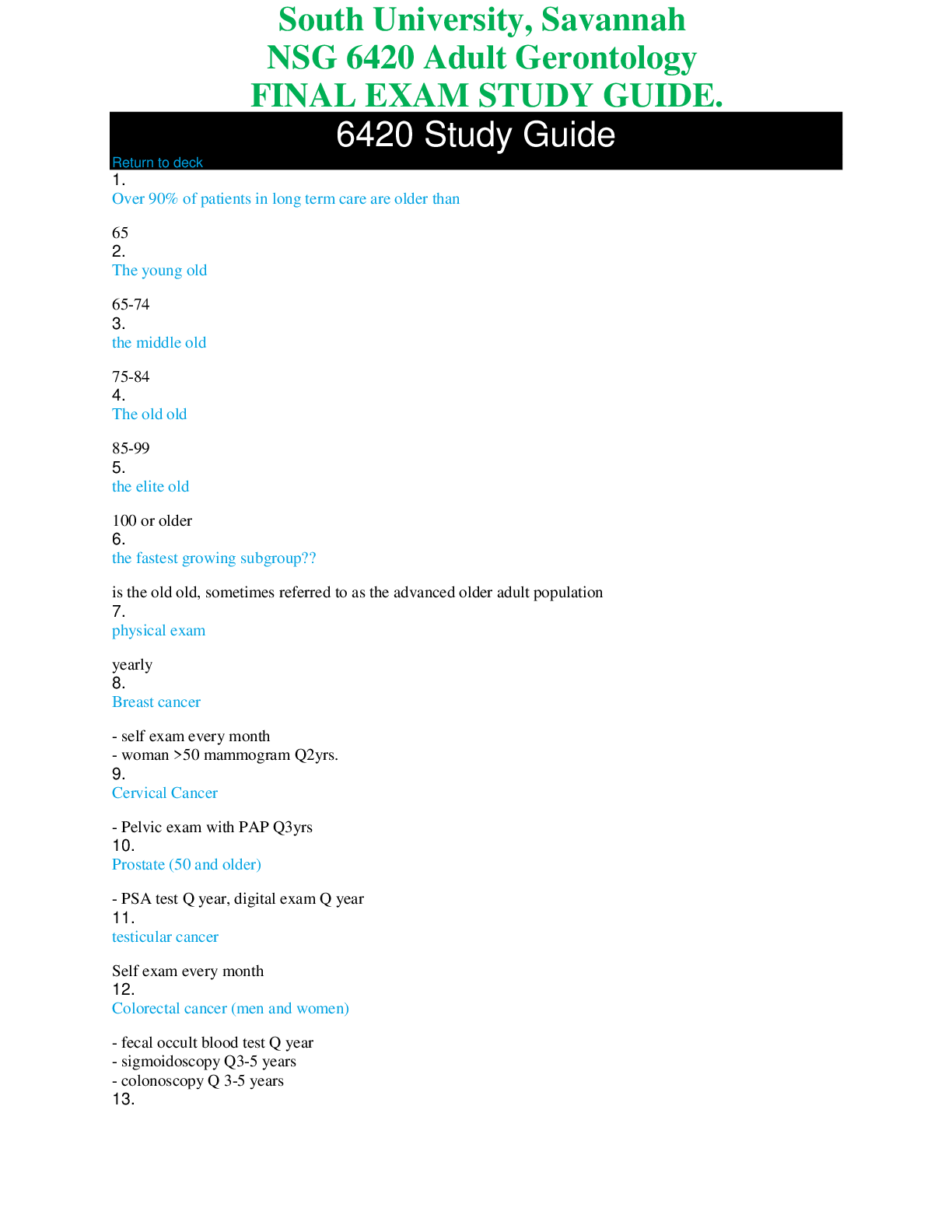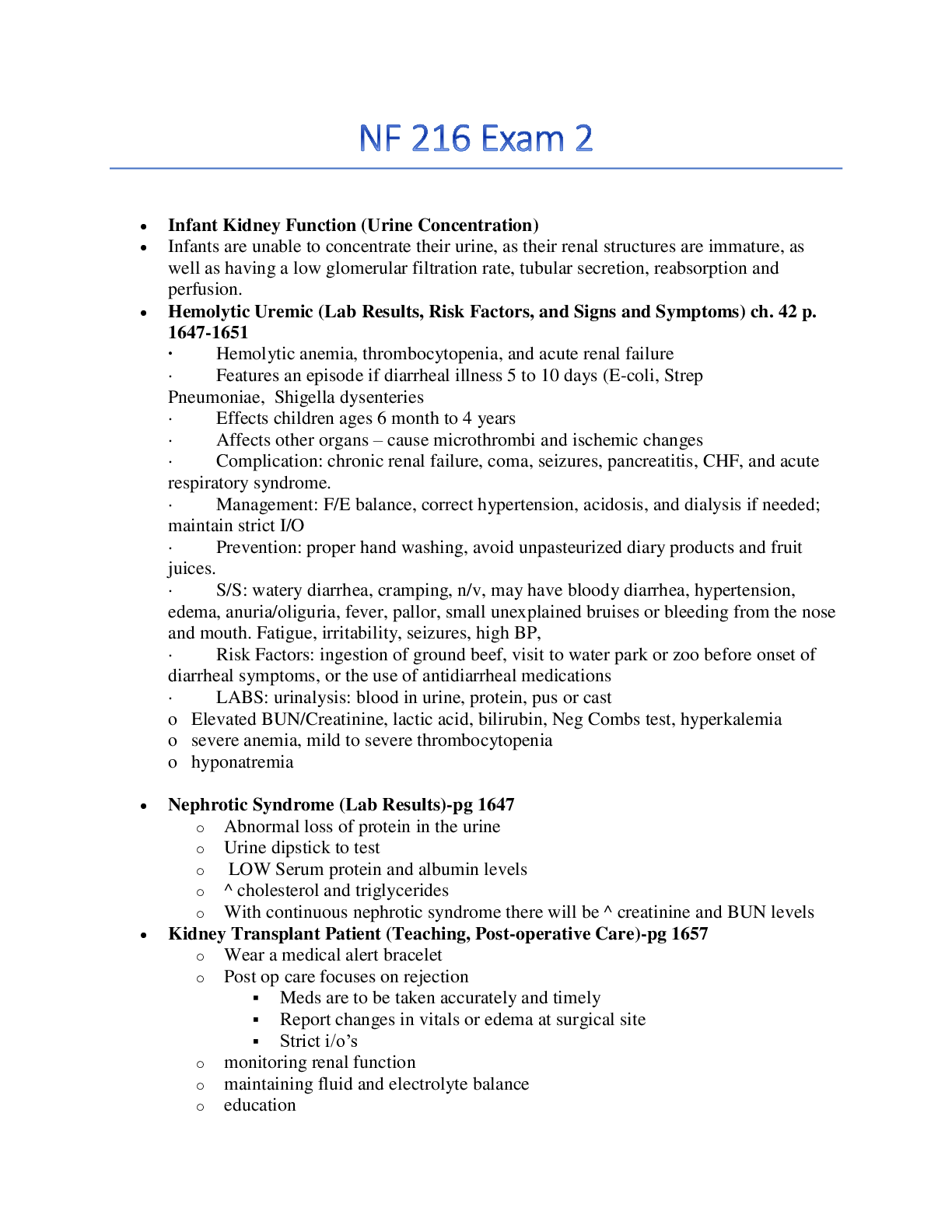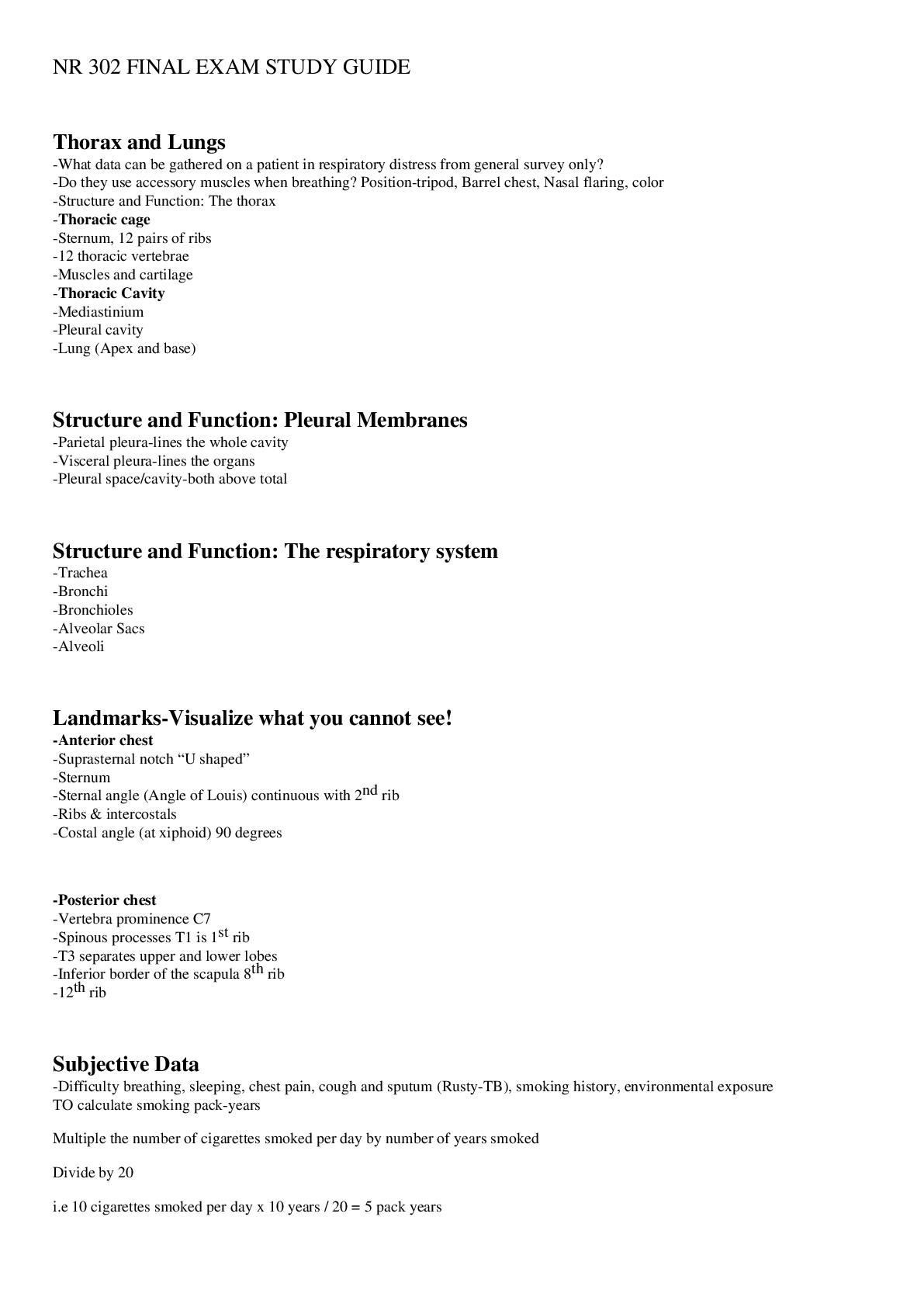*NURSING > STUDY GUIDE > NR 507 FINAL EXAM STUDY GUIDE 1 (All)
NR 507 FINAL EXAM STUDY GUIDE 1
Document Content and Description Below
NR 507 FINAL EXAM STUDY GUIDE 1 Reproductive: endometrial cycle and the occurrence of ovulation- the menstrual cycle consist of three phases: the follicular/proliferative phase (postmenstrual), fol... lowed by the luteal/secretory phase (premenstrual), and the ischemic/menstrual phase. *Ovarian hormones control the uterine (endometrial) events of the menstrual cycle. During the follicular/proliferative phase of the ovarian cycle estrogen produced by the follicle causes the endometrium to proliferate (proliferative phase) and induces the LH surge and progesterone production in the granulosa layer. During the luteal/secretory phase, estrogen maintains the thickened endometrium, and progesterone causes it to develop blood vessels and secretory glands (secretory phase). As the corpus luteum “starved” endometrium degenerates and sloughs off, causing menstruation, the ischemic/menstrual phase. uterine prolapse- the descent of the cervix or entire uterus into the vaginal canal due to weakened pelvic fascia and musculature and poor support from the vaginal muscles and fascia. polycystic ovarian syndrome- most common cause of anovulation and ovulatory dysfunction in women. Defined as having at least two of the following three features: irregular ovulation, elevated levels of androgens (e.g., testosterone), and the appearance of polycystic ovaries on ultrasound. PCOS is associated with metabolic dysfunction, including dyslipidemia, insulin resistance, and obesity. One of the most common endocrine disturbances affecting women, especially young women, and is a leading cause of infertility in the U.S. Strong genetic component to PCOS, various features of the syndrome may be inherited. PCOS patients are three times as likely to have insulin resistance, higher for obese women. Tend to have increased leptin levels. Symptoms within 2 years of puberty & include: dysfunctional bleeding or amenorrhea, hirsutism, acne, acanthosis nigricans, and infertility. 60% are obese. Increased risk for gestational DM, pregnancy-induced HTN, preterm birth, and perinatal mortality. testicular cancer and conditions that increase risk- most common cancer in men, age 15-35. Slightly more common on the right than on the left. 90% of testicular cancers are germ cell tumors arising from the male gametes. Two types: Seminomas-most common, least aggressive, make up 30-35% of testicular cancers & Nonseminomas-include embryonal carcinomas, teratomas, and choriocarcinomas, which are the most aggressive, but rare form of testicula [Show More]
Last updated: 1 year ago
Preview 1 out of 20 pages

Buy this document to get the full access instantly
Instant Download Access after purchase
Add to cartInstant download
We Accept:

Reviews( 0 )
$16.00
Document information
Connected school, study & course
About the document
Uploaded On
Jun 03, 2021
Number of pages
20
Written in
Additional information
This document has been written for:
Uploaded
Jun 03, 2021
Downloads
0
Views
36



